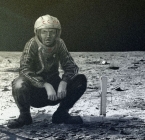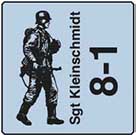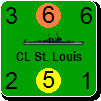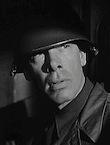neuromancer
Posts: 627
Joined: 5/30/2002
From: Canada
Status: offline

|
I said I wasn't going to bother with this any more, but I did something weird, which seems to be unpopular, I did research.
quote:
ORIGINAL: TulliusDetritus
Basically it's what you said...
Did I...? This should be interesting.
quote:
You said why you can't cut them off (they have their own supplies). This we know.
Yes, historically about 4 weeks from the beginning of the campaign.
quote:
Could you tell me when will we be able to cut them off? In theory:
Sure, that's easy, when they run out of supply and need resupply.
I'll use 4th Panzer Group as my example (by the way - a correction, they only needed to wait a week for the infantry to catch up, not sure where I got the three weeks from).
Barbarossa, 22 June to 5 August
On 22nd June, von Manstein pierced the Soviet 8th Army’s northern flank by Riga and advanced rapidly to the Dubissa River, where it seized a crossing on the Airogola viaduct. 56th Panzer Corps’ immediate objective was to secure a crossing on the Dvina River. 56 Panzer then advanced advanced towards Daugavpils which they reached on 25-26th June. In a coup de main the 8th Panzer Division (56th Panzer Corps) seized the vital road bridge across the Dvina River at Daugavpils and rapidly established a bridgehead. The bridge at Daugavpils is also well known because it became a prime target for VVS bombers attempting to disrupt the 4th Panzer Group’s advance. Many bombers were lost in daylight raids attempting to attack this target which the Germans naturally defended with heavy Flak and fighter cover. The Soviets naturally attempted to dislodge the Germans from their bridgehead and conducted a series of counter-attacks by committing 27th Army, but to no avail. 56th Panzer Corps then advanced through Ostrov and was planning a deep flanking attack towards Novgorod and Lake Ilmen (the map had them do a little loop on the way, no idea why).
Stavka was (naturally) alarmed by the rapid progress in the north and order an immediate counter-attack by a reinforced Northwestern Front. This major attack (known as the Sol’tsy-Dno Offensive Operation) was mounted by 7 rifle divisions, and the 10th Mechanised Corps (dispatched from the Northern Front). It commenced on 14th July and struck 4th Panzer Group’s 56th Panzer Corps (Manstein) advancing on Novgorod. The panzer corps was struck in the flank and rear, and 8th Panzer Division was encircled. Threatened with destruction, 8th Panzer Division broke out westwards (loosing or damaging around 70 tanks in the process) and the situation was stabilised by 18th July. This attack represented the first significant success by Soviet forces in this sector, and delayed any further advance by a week. It was around this point that Panzer Group IV delayed for a week or so for the infantry to catch up.
Its worth noting at this point that one of the reasons the Soviets couldn't do anything useful before this point (and this was a limited success) was not just that their C2 was a mess, not just that their forces were cumbersome and unwieldy, not just that a great many units didn't actually have the equipment they were supposed to have, but all the front line units had their supply dumps bombed to heck in the first few days. Most of the army was low on fuel and ammunition. Something the game doesn't appear to reflect at all.
Or to put it in the terms of this 'discussion', the Germans had stockpiled a bunch of supply (more on that later) while the Soviets had lost much of their stockpile.
Riga itself wasn't captured by 18th army until the 1st of July, they didn't fully catch up to the panzer spearheads until July 31st.
From the very first day of the offensive, 56 panzer - Probably most of Panzer Group IV - was operating behind enemy lines; cut off from direct supply. Unless the Soviet 8th Army packed it up and went home immediately, which I doubt, I imagine after the panzers raced off into the sunrise (east) they ended up (along with the other forward armies in the Baltic Military District) fighting 16th and 18th army. On July 14th - a little over 3 weeks in - the 56th was flanked and fully isolated, they fought their way out of the pocket, stabilized the situation, and advanced a bit more before finally taking a strategic pause.
In the game they would have been SCREWED.
So then, until the panzer groups run out of supply, it isn't really feasible to isolate them. This is how it was. I'm sure the Soviets would have liked to do it, but it wasn't possible.
They could be attacked, but for the most part this was only of limited success, if that. Often the Soviets took far worse than they gave. The Red Army wasn't really up to offensive operations yet (although as was illustrated, they could occasionally pull something off).
As another example from Pz.Gr. IV, the Soviet 12th Mechanized Corps and 2nd Tank Division attacked 41st Panzer Corps on 23rd June, in a series of running tank battles that went on until about the 29th, 2nd Tank Div was destroyed, and the 12th Mech Corps withdraw at about 50% strength, this was despite having T-34s and KV-1s (around 50 of each) and an overall 2 to 1 numerical superiority over 41 Panzer. 41 Panzer wouldn't have come off unscathed of course, but it remained a potent combat force and continued to take several objectives.
I suppose the next question is "are you saying that the panzers only need to resupply once a month?"
No. Like I said before, the initial buildup couldn't be repeated in an active war. This was especially true for the Germans, and was quite possibly the biggest mistake (of several) of Barbarossa.
Hitler was an idiot, as were his chief advisers (historically a good thing, but not so good for the Wehrmacht). Germany hadn't gone to a total war footing yet, and when they finally did, it was too late.
They only planned on a short summer campaign, and really only had enough supply for a month. They quickly burned through the stockpiled supplies, and by early August shortages of ammunition, food, and fuel began to be felt. The limitations of the Germans to move supply inside Russia became apparent, and they weren't making enough supplies to keep an operation of this size going at full speed anyway.
quote:
1) soon or late they will run out of gas
2) gas should arrive (trucks). This is yes or yes.
Its not a binary question, let alone a monodecimal one. As I have shown, they started out with significant supply. After that is gone they would need resupply, and at that point the standard rules should apply (sort of, if they get cut off but still have enough supply to move and fight because they had been mostly static before getting cut off, they shouldn't suffer too many ill effects until they burn through their reserve - this should be true for ALL units in the game).
quote:
Conclusion, can we cut these line of communications off? Yes or no? When exactly? 
I would say the game is abstract on this one. To simulate 2) you M U S T isolate an enemy unit...
So... you want what is possibly the single biggest tactical development of WW2, and a crucial element in seeking any kind of success in a East Front campaign to be eliminated from the game because it doesn't jibe with how you imagine supply and communication to work - despite historical evidence to the contrary? What would be the point?
"Hi, I'm Fritz, your Axis beat toy for this game. I won't actually play as there is no point, you can just beat on my units for your personal enjoyment."
(turn about is fair play)
|
 Printable Version
Printable Version






 Oh, and obviously no need of Soviet counters. What for? Apparently panzers are untouchable
Oh, and obviously no need of Soviet counters. What for? Apparently panzers are untouchable 





 Cutting enemy panzers off on the really FIRST turn is basically irrelevant... On the second it's perhaps a small nuisance... What do you suggest then? Germans UNTOUCHABLE until what turn?
Cutting enemy panzers off on the really FIRST turn is basically irrelevant... On the second it's perhaps a small nuisance... What do you suggest then? Germans UNTOUCHABLE until what turn? 








 .
.




 New Messages
New Messages No New Messages
No New Messages Hot Topic w/ New Messages
Hot Topic w/ New Messages Hot Topic w/o New Messages
Hot Topic w/o New Messages Locked w/ New Messages
Locked w/ New Messages Locked w/o New Messages
Locked w/o New Messages Post New Thread
Post New Thread